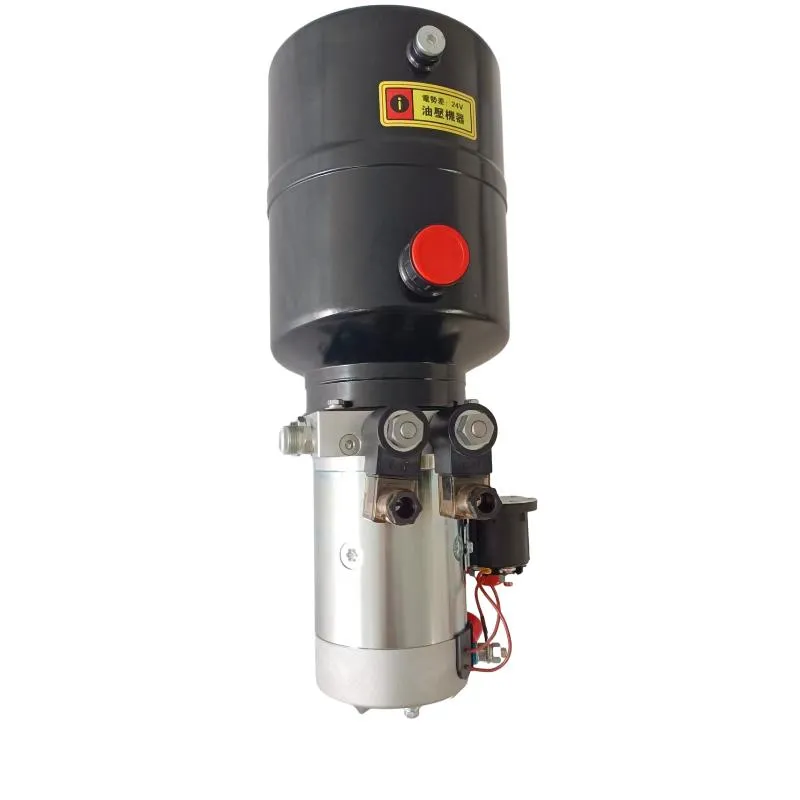Sep . 03, 2024 01:55 Back to list
Hydraulic Cylinder Factory | High-Quality Hydraulic Cylinders
Understanding the Force of a Hydraulic Cylinder
Hydraulic cylinders are essential components in many industrial applications, from construction machinery to manufacturing equipment. They convert hydraulic energy into mechanical force, enabling heavy lifting and precise movements. To grasp the importance of hydraulic cylinders, one must understand the factors contributing to the force they generate.
The foundational principle of hydraulic cylinders is Pascal's Law, which states that a change in pressure applied to an incompressible fluid is transmitted undiminished throughout the fluid. This principle forms the basis of how hydraulic systems operate. In simple terms, when fluid is pumped into a hydraulic cylinder, it creates pressure that pushes a piston, generating force.
The force exerted by a hydraulic cylinder can be calculated using the formula
\[ F = P \times A \]
where \( F \) is the force in pounds (or Newtons), \( P \) is the pressure of the hydraulic fluid in psi (or Pascals), and \( A \) is the area of the piston in square inches (or square meters). This equation illustrates that the force output is directly proportional to both the pressure of the hydraulic fluid and the size of the piston. Therefore, increasing either the pressure or the piston area will result in a greater force output.
In a factory setting, hydraulic cylinders are often employed in machinery for tasks such as pressing, lifting, and shaping materials. Each application may require different specifications for the cylinder's force. For instance, in manufacturing, precision is crucial; thus, cylinders that offer fine control over force and motion are preferred. In contrast, construction machinery may focus on cylinders capable of exerting maximum force to lift heavy loads.
force of a hydraulic cylinder factory

When selecting a hydraulic cylinder for a particular application, several factors must be considered
1. Type of Cylinder Different types of hydraulic cylinders, such as single-acting, double-acting, and telescopic cylinders, serve various functions. Double-acting cylinders can generate force in both directions, which is beneficial for applications requiring push and pull.
2. Operating Pressure The working pressure rating of the hydraulic system must align with the cylinder’s specifications to ensure safety and efficiency. Higher operating pressures can lead to increased force but require robust materials to withstand the stress.
3. Cylinder Diameter The diameter of the cylinder directly influences the piston area and, thus, the total force available. Larger diameters can handle greater loads but may require more space and increased hydraulic fluid.
4. Speed of Operation The speed at which the cylinder operates also impacts its effectiveness. Faster operations may compromise accuracy, so it’s vital to balance speed with control in machinery design.
5. Durability and Maintenance Regular maintenance of hydraulic cylinders is crucial for ensuring longevity and performance. Factors such as seals and lubrication affect the efficiency and reliability of force generation.
In conclusion, the force of a hydraulic cylinder is a critical aspect that determines its effectiveness in various applications across a hydraulic cylinder factory's operations. Understanding how pressure, area, and design choices intersect enables manufacturers and operators to select the proper hydraulic cylinders for their specific needs, optimizing performance and safety. As technology advances, the capabilities of hydraulic systems will continue to evolve, driving innovation in countless industries.
-
Fork Lift Power Units - Hebei Shenghan | Efficiency, Reliability
NewsJul.13,2025
-
1.5-Ton Turbocharged Cylinder-Hebei Shenghan|Hydraulic Solution,Energy Efficiency
NewsJul.13,2025
-
Auto Hoist Power Units-Hebei Shenghan|Efficiency&Industrial Lifting
NewsJul.13,2025
-
Double Acting Power Units-Hebei Shenghan|Hydraulic Solutions,Industrial Efficiency
NewsJul.13,2025
-
1.5 Ton Lifting Cylinder 70/82-40-290-535 - High-Performance Hydraulic Solution | Hebei Shenghan
NewsJul.13,2025
-
Fork Lift Power Units - Hebei Shenghan | Efficiency&Reliability
NewsJul.13,2025
